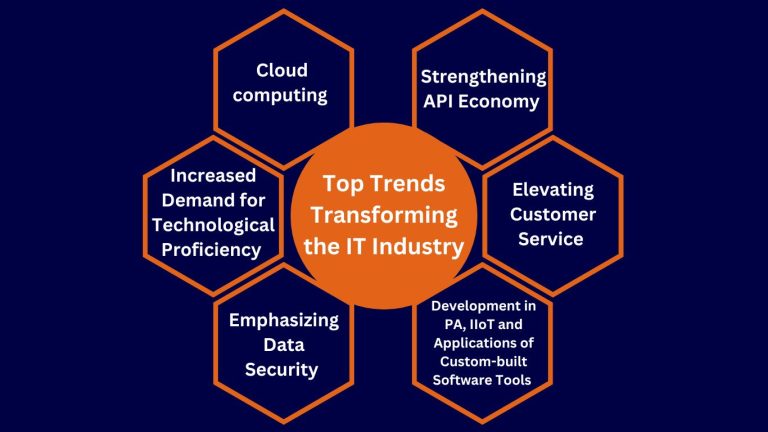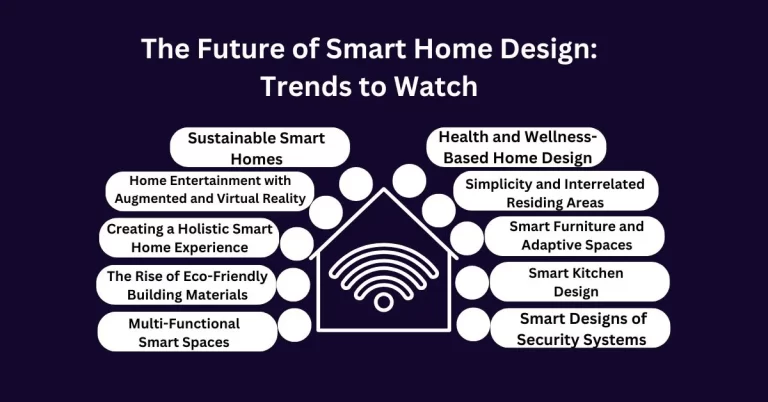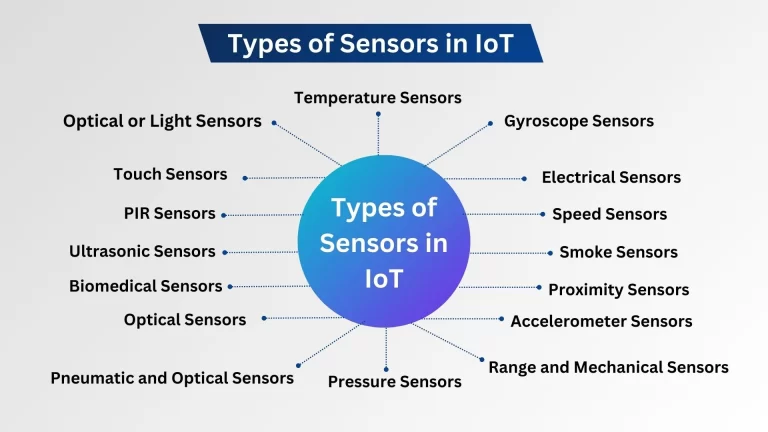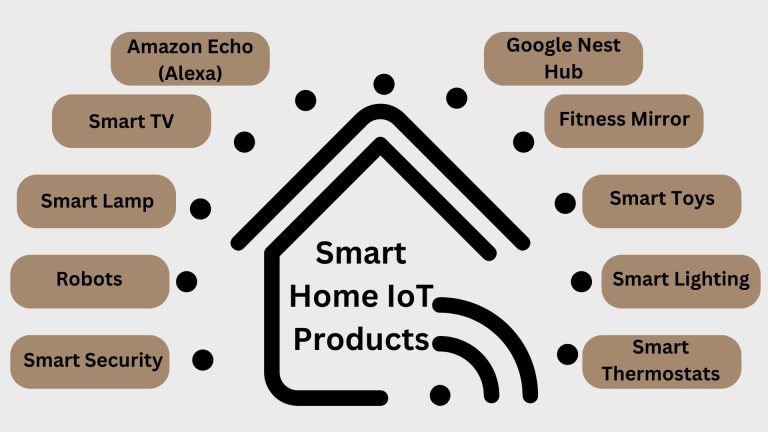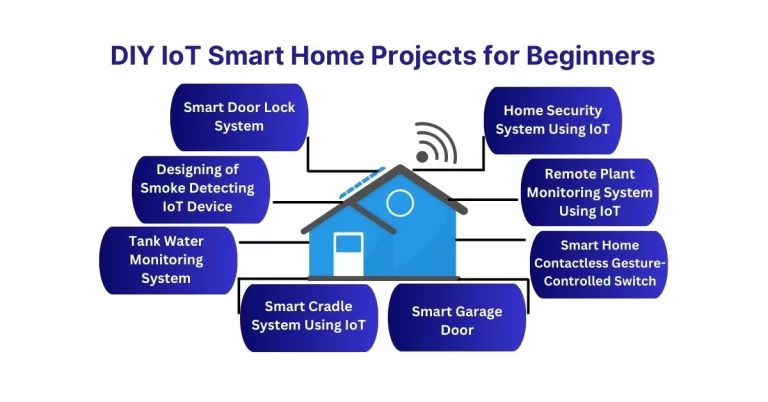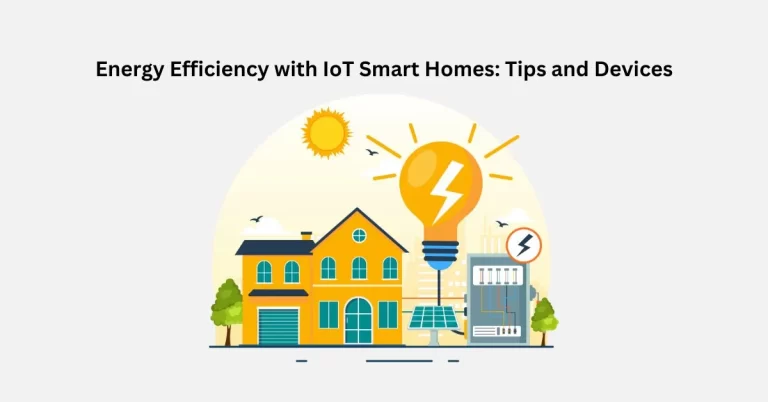Top Ways to Integrate IoT and Renewable Energy : Transform Your Smart Homes into Sustainable Powerhouses
Over the last few years, integrating IoT and renewable energy has become a key approach to sustainable living. Using renewable energy sources like solar power and wind energy together with IoT technology is transforming homes into green power management. It increases effectiveness and decreases emissions.
In this article, we will look closer into how IoT renewable energy integration is making homes more sustainable and self-sufficient and the technologies, advantages, disadvantages, and prospects.
What is IoT Renewable Energy Integration?
IoT renewable energy integration means the incorporation of IoT into renewable energy systems to provide efficient, intelligent, and self-controlled home energy systems. It will reduce the dependence. Smart meters, sensors and energy management software enable homeowners to manage their consumption and optimize the usage of renewable energy by IoT devices.
For instance, smart solar panels and batteries utilize IoT to store excess power produced during the day and discharge it when required or at night. This combination makes sure that homes are not only sustainable but also functional to the overall goal of a sustainable environment.
Main Elements of IoT Renewable Energy Solutions for Smart Homes
Smart Energy Management System
Smart energy management systems are the control center of the IoT-based renewable energy system. They study the energy usage habits and self-adjust the energy supply in a house.
Solar Panels and IoT Sensors
The use of IoT sensors in solar panels enables the homeowner to track the process of energy generation. IoT devices monitor sunlight and control the tilt and position of panels to harness the most energy generation use of solar energy very efficiently.
Smart Batteries and Energy Storage
Smart batteries can store excess renewable energy and then discharge the energy when it is required. IoT allows them to adapt the storage patterns according to the current consumption, weather conditions, and peak hours.
Wind Turbines and Microgrids
In areas that have good wind energy opportunities, small wind turbines with IoT can offer extra power. Microgrids enable these renewable energy sources to operate in coordination with the home so that energy is always present.
Smart appliances and Home Automation
HVAC systems, water heaters and lighting systems are connected to IoT networks allowing them to operate on renewable energy during periods of high production.
Opportunities of IoT Renewable Energy Integration in Smart Homes
1. Reduced Energy Costs
Smart energy management systems help to reduce energy costs by a great extent. Smart devices, for instance, ensure that they only draw power when there is a need to do so and ensure that they utilize as much renewable energy as possible in their operations.
2. Enhanced Energy Efficiency
IoT technology allows the connection of different forms of energy and also controls the flow of energy.
3. Lower Environmental Impact
Conserving non-renewable energy decreases the emission of greenhouse gases and pollution in the environment. IoT devices enhance the use of renewable energy resources in the society and save the planet from pollution.
4. Energy Security and Sustainability
It enhances the ability of homes to produce their power and reduces dependency on central energy systems. Smart homes can be powered by stored or generated renewable energy in cases of emergencies or grid failures.
5. Real-Time Supervision and Management
Homeowners can monitor energy consumption, check the status of the systems, and even operate devices via smartphone. This real-time access enables homeowners to make informed decisions to improve the usage of energy in their homes.
Issues and Solutions
High Capital Cost
The high initial investment is an important characteristic for the business venture.
The integration of IoT structures with renewable energy systems can be expensive in terms of initial investment. However, incentives such as tax benefits and grants aimed at promoting renewable energy adoption may help offset these expenses in the long term.
Data Security and Privacy Concerns
These systems are known to collect large volumes of data and this information may be vulnerable to cyber criminals. Thus, it becomes crucial to ensure the application of strong cybersecurity strategies that would allow the protection of smart homes from data leaks and hacking.
Some renewable energy technologies are not developed to integrate with IoT devices. As a result, homeowners may have to buy matching devices or integrate other systems to create an efficient energy management system.
Maintenance and Upgradability
Renewable energy systems powered by the IoT require regular servicing so that they can work optimally. Over time, systems will reduce inefficiency and require some updating or inspection now and then to ensure that they are as efficient as needed.
Key Technologies for Integrating IoT and Renewable Energy
Technologies that define IoT and renewable energy integration in smart homes are given below
AI and ML
Using AI and ML the general usage of energy can be analyzed and future energy requirements can also be estimated. For example, an intelligent energy management system is able to control heating or cooling and factors such as time, climate, and existence of people.
Energy Blockchain
Smart homes that are connected to the blockchain transact in P2P energy trading. Excess renewable energy can be sold to fellow homeowners in a microgrid, hence fostering a renewable energy neighborhood.
Smart Grids and Advanced Metering Infrastructure
Smart grids allow households to interact in both ways with the utility providers and even return the energy to the grid. AMI provides accurate measurement of energy consumption, gaining the interest of both consumers and energy providers.
5G Connectivity
The 5G technology provides high data transfer rates which is useful in the real-time interaction of IoT devices.
Top IoT Features for Energy Optimization
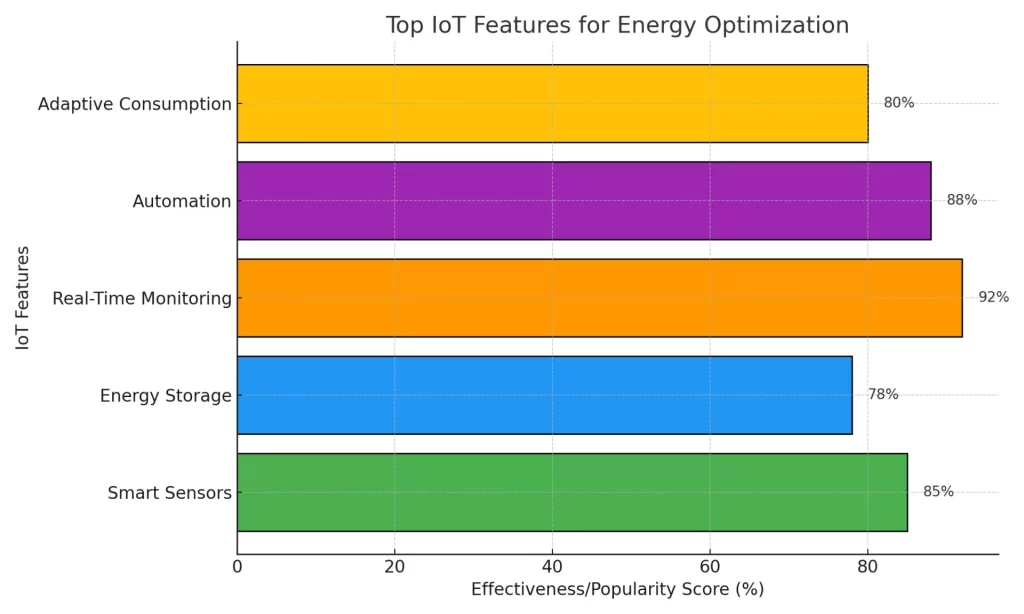
How IoT and Renewable Energy Are Shaping Smart Homes
Smart Solar Panels
It is believed that smart solar panels that will be able to follow the direction of the sun will be common soon in the near future. These systems will interface well with IoT to maximize energy harvesting and supply.
Growth of Residential Microgrids
More and more, consumers are installing microgrids to enable energy independence at the community level. Integration of IoT will allow energy sharing and promote sustainable energy use at the community level.
Predictive Energy Analytics
Energy consumption can be forecasted using historical data and weather patterns and this will enable households to better manage renewable energy resources.
Augmented Reality (AR) for System Monitoring
AR applications allow the homeowner to see the energy systems in the house and get real-time data on energy generation, consumption, and storage, which will improve user interest and knowledge.
This graph showcases the top IoT features that help make smart homes more energy-efficient, with each feature ranked by its effectiveness. Real-time monitoring stands out as the most impactful, closely followed by automation and smart sensors, both key to cutting down energy use. best way to Show IoT and Renewable Energy
IoT and Renewable Energy Trends for Sustainable Homes
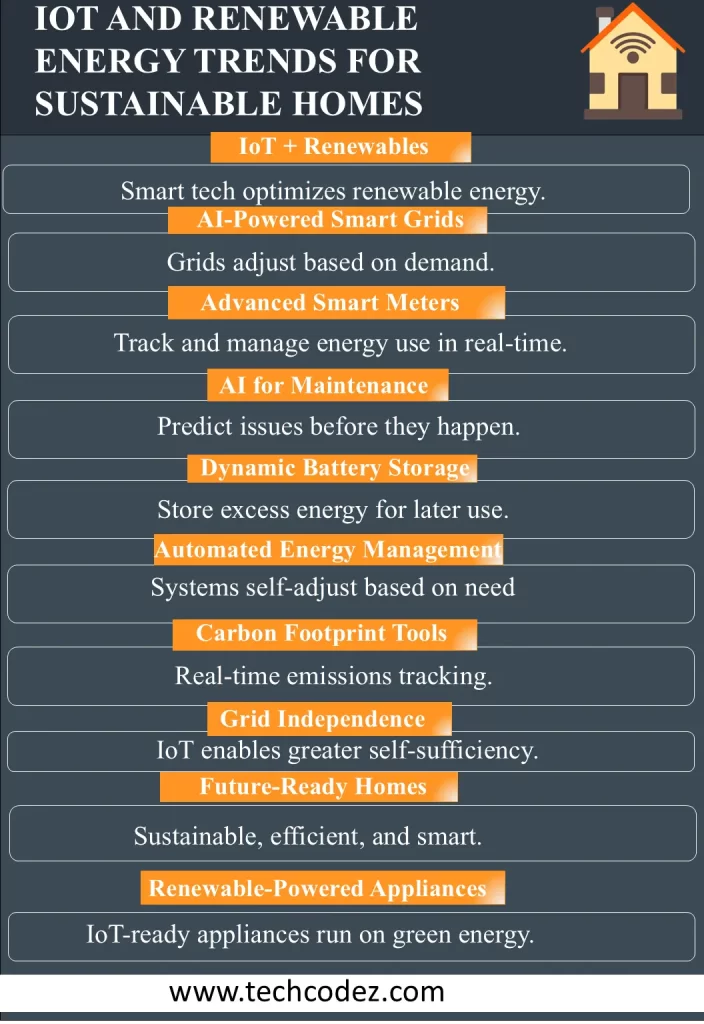
Measures for Selecting IoT-Based Renewable Energy Systems in Homes
- Evaluate Existing Renewable Energy Resources: Consider the types of renewable energy that are most appropriate for your home, its location, and its energy needs: solar, wind, or hybrid.
- Select Compatible IoT Devices: It is recommended that IoT devices that are to be used should be compatible with the renewable energy system to avoid communication and integration issues.
- Choose a Dependable Energy Storage System: Buy a smart battery or an energy storage system to store energy for future use and strengthen the stability of the energy supply.
- Connect with a Smart Grid: If you are connected to a smart grid, you can feed excess energy back into the grid or join a community energy storage scheme.
Challenges and Solutions in IoT and Renewable Energy Integration for Smart Homes
Find Challenges and Solutions in IoT and Renewable Energy Integration for Smart Homes in single table
| Challenge | Description | Solution |
|---|---|---|
| High Upfront Costs | Installing renewable energy systems along with IoT devices can be pricey initially, which can be a hurdle for many. | To help with costs, look for available grants, tax breaks, or other incentives. Spreading out the installation in phases can also make it more manageable. |
| Privacy and Security Concerns | IoT devices collect personal data, which could be vulnerable to hacking or unauthorized access | Protecting your data is key—using encryption, multi-factor authentication, and other security measures can help keep your information safe. |
| Compatibility Issues | Some renewable systems might not work perfectly with IoT devices, making integration tricky. | Choosing devices designed to work well together or using adaptable energy management systems can make integration easier. Consulting a professional can also ensure a smoother setup. |
Conclusion
The use of IoT and renewable energy systems is an efficient approach to the construction of sustainable, self-sufficient, and green homes. The integration of IoT and renewable energy systems will help homeowners to decrease their carbon footprint, decrease energy expenses, and obtain a more dependable power source. Smart homes with the help of IoT will be a key factor in the global shift to sustainability.
FAQ
What is IoT renewable energy integration?
IoT renewable energy integration can be defined as the ability to incorporate IoT devices and systems to improve renewable energy systems in smart homes. This integration allows the homeowner to control the flow, storage, and distribution of energy within a home through interconnected devices.
What are the main advantages of using renewable energy from IoT in smart homes?
IoT and renewable energy can decrease energy prices, increase efficiency, lessen the environmental effects, and increase energy security. Smart systems also offer instantaneous data for energy efficiency so that homeowners can minimize energy use and reliance on conventional power networks.
What are the main issues of IoT renewable energy integration?
Some are high initial costs, data privacy and security some technologies may not be compatible with IoT and renewable devices, and maintenance and upgrading of systems after some time may be necessary to ensure systems carry out their tasks efficiently
Find More About Eco Friendly Device


